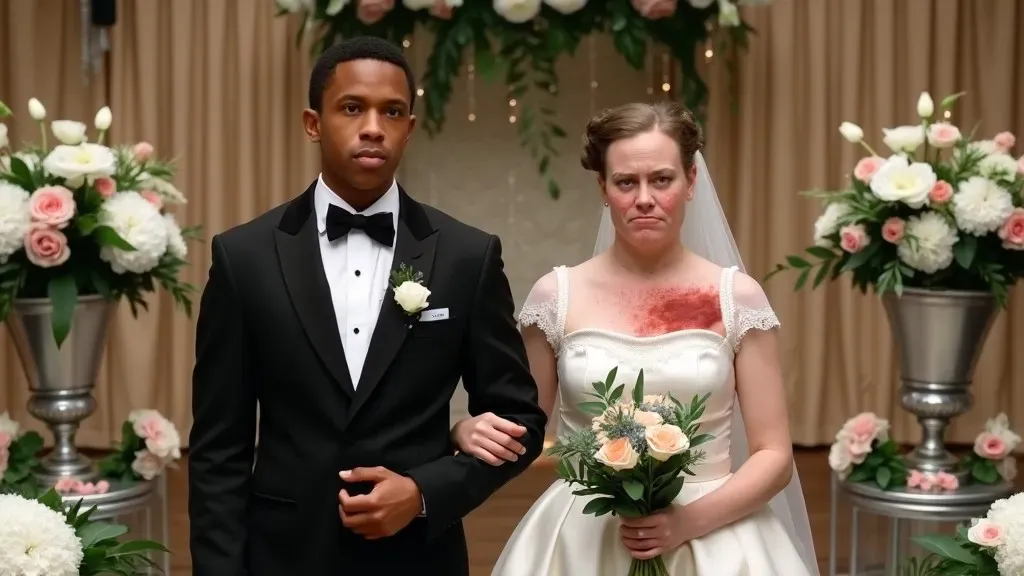I don’t know how to write one of those, but I do know how to build things, and I know when something deserves to be rebuilt. You have my name. You have my burden.
Now you have something else. Do with it what you will. Jamal had considered burning the letter.
Margaret, after reading it, had simply folded it back into the envelope and placed it in a drawer. She didn’t speak of it again. Their days took on a quiet rhythm.
Morning coffee on the porch, separate commutes into town, dinners cooked together with the radio playing softly in the background. On weekends, they volunteered at local shelters, helped repair the playground at the trauma center, sat in circles with kids who had their own scars, visible and not. Margaret painted again, something she hadn’t done in years.
At first it was tentative, almost shy. Then the colors grew bolder. Her canvases began to fill the walls of their home, as if she were claiming each room as part of herself.
Jamal thrived in his new role, mentoring teenagers who reminded him of his younger self, sharp, restless, skeptical. He taught them more than just code and logic. He taught them to bet on themselves, to resist the soft prison of low expectations.
When he spoke to them about what he’d been through, he did so without embellishment, without heroism. He simply told the truth, and the truth, it turned out, was powerful enough. The story might have ended there.
It could have faded into the comfort of obscurity, a happy footnote to a dramatic fall from grace. But fate, or perhaps unfinished business, had one more card to play. On a damp morning in April, Margaret received a call from a woman named Karen Blake, the executive director of the very foundation her father had once used as a vehicle for fraud, a now-disgraced charitable front that had been seized by the courts and placed into receivership.
Karen had been appointed by the state to oversee its dissolution, but she had a different vision. I want to rebuild it, she said over the phone, for real this time, not as a vanity project, as something meaningful. And I want you and Jamal to run it.
Margaret was speechless. Karen continued, You have the right to say no. You’ve done enough, but if you say yes, it becomes yours, completely.
No boardroom strings, no shareholders, just you and the mission. It took them three days to decide. By the end of the week, Margaret was named executive director of the newly reconstituted Holt Foundation for Recovery and Opportunity.
Jamal accepted the role of director of youth development. Together, they began to outline programs focused on long-term support for children affected by abuse, displacement, and neglect. They built it slowly, from the ground up, not with fanfare, but with deliberate care.
They didn’t take salaries for the first six months. The work consumed them, but it also centered them. They traveled together to schools and foster homes, met with caseworkers, collaborated with educators.
Margaret spoke less about her past now, not because she was hiding it, but because she no longer needed to explain herself to anyone. Her presence was its own answer. She was living proof of what resilience could look like.
Not triumphant, not unscarred, but steady, strong, and honest. Jamal, in turn, found himself transformed not by the platform, but by the people. The young boy who stared at him from across the table with a mix of awe and suspicion.
The teenage girl who asked bluntly why she should trust him. The 16-year-old with his same haunted eyes who, after a month, finally smiled for the first time. In their home, they kept no photos of Peter Holt, no mementos from that world.
But in their bedroom, beside the nightstand, hung one painting. It showed a single swing, suspended from a tree, swaying gently over a patch of sunlit grass. Margaret had painted it one afternoon in silence, and when she finished, she handed it to Jamal without a word.
He understood instantly. It was the swing from the Polaroid, the last moment before everything changed. One year to the day after Margaret walked into that shareholder meeting, they held a ribbon-cutting ceremony for the Foundation’s first permanent youth center, a renovated warehouse in the Bronx.
Families gathered. Children laughed. News outlets sent cameras, but not many.
The world had moved on to other stories. Margaret and Jamal stood side by side as the mayor spoke, as donors thanked them, as children tugged on their sleeves to show them the murals they had painted on the walls. When the ceremony ended, they stepped outside, away from the applause, into the soft, humid air.
I never thought we’d come back here, Margaret said. Jamal slipped his hand into hers. We didn’t come back.
We came forward. They walked down the street, past the old deli that now had a new awning, past the school where Jamal had once fixed computers for free because the budget was too tight to hire help. People recognized them.
Some waved. Some just nodded. But no one looked away.
The world would never be perfect. Systems would still fail. People would still betray.
Power would still corrupt. But not today. Today, they had a building full of children who knew someone was fighting for them.
They had each other. They had a foundation not just of concrete and steel, but of truth, of intention, of choice. And for Jamal and Margaret, that was enough.
More than enough.

